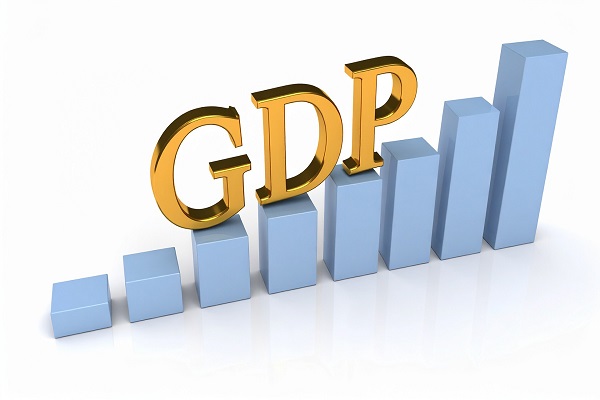Building a Sustainable Investment Portfolio: ESG and Green Bonds in 2025

In recent years, sustainability has emerged as a key consideration for investors seeking long-term financial success while making a positive impact on the environment and society. As we move into 2025, building a sustainable investment portfolio has become more accessible, with Environmental, Social, and Governance (ESG) factors and green bonds at the forefront. These strategies are not only an ethical choice but also present opportunities for growth as global financial markets increasingly favor sustainability-driven investments.
The Rise of ESG Investing
ESG investing has gained momentum as investors, regulators, and companies alike prioritize sustainable practices. ESG factors assess how well companies perform on environmental, social, and governance issues, offering a holistic view of a company's long-term sustainability and risk management practices. For instance, companies that demonstrate responsible environmental stewardship, fair labor practices, and robust governance structures are seen as more likely to thrive in the long run, while those neglecting these factors may face reputational, legal, and financial risks.
In 2025, ESG investing is no longer a niche strategy but a mainstream approach to portfolio management. Many large institutional investors, including pension funds, insurance companies, and sovereign wealth funds, are integrating ESG criteria into their investment strategies. Similarly, retail investors now have access to ESG-focused mutual funds, exchange-traded funds (ETFs), and direct investments in sustainable companies.
Green Bonds: A Growing Market
Green bonds are a key component of sustainable investing, offering a way for investors to support projects that contribute to environmental sustainability. These fixed-income instruments are issued by governments, corporations, or financial institutions to fund projects that address environmental challenges, such as renewable energy, energy efficiency, pollution control, and climate change mitigation.
As of 2025, the global green bond market has continued to expand, driven by increasing demand for climate-conscious investment opportunities. In addition to traditional green bonds, a variety of new bond structures have emerged, including "sustainability-linked bonds" and "transition bonds," which allow companies in high-carbon sectors to finance their transition toward a greener future. These bond types provide flexibility for companies while offering investors a diverse range of options to align their portfolios with sustainability goals.
ESG and Green Bonds in Portfolio Construction
Building a sustainable investment portfolio in 2025 requires a strategic blend of ESG investments and green bonds, tailored to the investor's risk tolerance, time horizon, and ethical preferences. Here are key considerations when constructing a sustainable portfolio:
-
Align with Global Sustainability Goals: Many investors are aligning their portfolios with international frameworks, such as the United Nations Sustainable Development Goals (SDGs) or the Paris Agreement. These frameworks offer a clear roadmap for identifying and supporting investments that contribute to addressing pressing global challenges, including climate change, inequality, and poverty.
-
Diversification with ESG and Green Bonds: While ESG equities offer growth potential, green bonds can provide stability and income through fixed returns. A balanced portfolio might include both equity investments in ESG-conscious companies and green bonds funding renewable energy or sustainable infrastructure projects. This combination provides investors with exposure to high-growth sectors while mitigating risks through the diversification offered by bonds.
-
Active vs. Passive Management: Investors can take either an active or passive approach to sustainable investing. Active management involves selecting individual ESG-compliant stocks and bonds based on rigorous research and analysis, while passive investing typically involves ESG-focused ETFs or index funds that track a broad basket of sustainable investments. Both approaches can be effective, depending on the investor's preference for control versus convenience.
-
Monitor and Adjust: Sustainability is an evolving landscape, with new technologies, policies, and market conditions influencing ESG and green bond performance. Investors must stay informed about regulatory changes, emerging trends, and the performance of their holdings. Regularly reviewing and adjusting a portfolio ensures that investments remain aligned with sustainability goals while continuing to meet financial objectives.
ESG and Green Bonds in the Context of Global Trends
The push for sustainability is backed by a growing body of regulations and policies that favor ESG investing. Governments around the world are introducing stricter environmental regulations, carbon pricing mechanisms, and sustainability disclosure requirements. For example, the European Union's Green Deal and the U.S. rejoining the Paris Agreement have provided strong regulatory support for green investments.
Additionally, companies are increasingly embracing ESG as a competitive advantage, recognizing that consumers, investors, and employees are prioritizing sustainability. This shift is accelerating the flow of capital toward green initiatives and projects, further strengthening the market for green bonds and ESG-focused companies.
The integration of ESG and green bonds into investment portfolios not only helps investors align their wealth-building strategies with their values but also capitalizes on the growing demand for sustainable solutions. In 2025, the convergence of financial returns and societal impact has reached a tipping point, offering investors a compelling reason to consider sustainable investing.
Conclusion
As we look to 2025 and beyond, the importance of sustainable investment strategies will only continue to grow. ESG investing and green bonds offer pathways for investors to create portfolios that reflect their values while also capitalizing on the opportunities presented by the global shift toward sustainability. By integrating these investment tools into their strategies, investors can help drive positive environmental and social change while positioning their portfolios for long-term success. Sustainable investing is no longer just an ethical choice—it’s a smart financial move for the future.






















